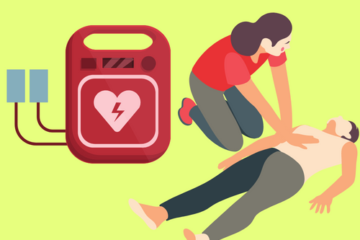Rideshare services like Lyft have become a popular mode of transportation, but they are not without risks. Among the most alarming scenarios is a hit-and-run accident involving a rideshare vehicle. When the responsible party flees the scene, it complicates seeking justice and compensation for any injuries or damages sustained. Lyft accidents frequently result in injuries, making it crucial to understand the steps to take and the legal options available for anyone involved in such incidents.
For victims of these incidents, seeking professional legal guidance can make a significant difference in dealing with the fallout of a hit-and-run. This article explores the immediate actions to take, the process of reporting and documenting the accident, and the importance of legal and medical support in such challenging situations.
Immediate Safety Measures
Following a hit-and-run, ensuring the immediate safety of all passengers is paramount. Check for injuries and call emergency services if necessary. Moving to a safe location away from traffic can prevent further harm while waiting for authorities to arrive.
Maintaining a calm demeanor and assessing the situation allows you to make rational decisions. Ensuring that everyone is safe and receiving necessary medical attention is the first step toward managing the chaos that follows a hit-and-run accident.
Collecting Vital Information
Despite the shock of a hit-and-run, it is crucial to collect as much information as possible. Note the make, model, and color of the fleeing vehicle and any part of the license plate number. Photographs of the accident scene, vehicle damage, and visible injuries can be valuable evidence.
Witness accounts are also essential. Gather contact information from bystanders who saw the accident. Their testimonies can provide additional details that might have been missed and help authorities investigate.
Reporting to Authorities
Reporting the hit-and-run to the police is a critical step. An official police report documents the incident, which is necessary for insurance claims and potential legal actions. Provide the police with all the collected evidence and witness statements.
This report serves as an official record of the incident and can significantly impact the success of your insurance claim and any future legal proceedings.
Notifying Lyft and Your Insurance Company
After ensuring safety and reporting to the authorities, inform Lyft about the accident through their app or customer service. Lyft’s support team can guide you through their specific procedures for handling hit-and-run incidents.
Simultaneously, notify your insurance company to initiate the claims process. Providing them with the police report and collected evidence will facilitate a smoother claim and help determine what coverage applies to your situation.
Navigating Insurance Coverage
Understanding your insurance coverage is crucial in hit-and-run cases. Lyft typically offers uninsured motorist coverage, which can apply when the at-fault driver is unidentified. This coverage helps pay for medical expenses, lost wages, and other damages.
Review your personal auto insurance policy and Lyft’s coverage to understand what benefits you are entitled to. Consulting with an attorney can help clarify any complexities and ensure you maximize your compensation.
The Importance of Medical Evaluation
Even if injuries seem minor, seeking immediate medical attention is vital. Some injuries may not manifest symptoms right away but can become serious over time. A thorough medical evaluation ensures that all injuries are documented, which is critical for your insurance claim.
Medical records provide concrete evidence of your injuries and are essential for securing compensation. Follow-up treatments and maintaining a record of all medical expenses further strengthen your claim.
Leveraging Witness Testimonies and Surveillance Footage
Leveraging witness testimonies and surveillance footage can be pivotal in hit-and-run cases. Here are the key points to consider:
Witness Testimonies:
- Crucial details: Eyewitnesses can provide important information about the incident, such as the vehicle’s make, model, color, license plate number, and the driver’s appearance.
- Written statements: Ask witnesses to provide detailed written statements about what they saw. These statements should include their observations, the sequence of events, and any other relevant details.
- Contact information: Collect contact information from witnesses, including their names, phone numbers, and addresses. This will allow law enforcement or your attorney to follow up if needed.
Surveillance Footage:
- Nearby businesses: Surveillance cameras from nearby businesses, such as stores, gas stations, or restaurants, may have captured the incident or the fleeing vehicle. Request access to these recordings as soon as possible.
- Traffic cameras: Traffic cameras at intersections or along the road can provide additional evidence. These cameras might have recorded the vehicle’s movements before, during, and after the incident.
- Preservation of evidence: An attorney can assist in obtaining and preserving surveillance footage. They can issue subpoenas if necessary to ensure the footage is not deleted or overwritten.
- Analyzing footage: Surveillance footage can offer critical evidence, such as identifying the fleeing vehicle, the direction it traveled, and potential witnesses or other involved parties.
Seeking Legal Assistance
Engaging a personal injury attorney is often essential in hit-and-run cases. An experienced Lyft accident attorney can help gather additional evidence, negotiate with insurance companies, and represent your interests in court if necessary.
Attorneys can also guide you through the legal complexities, ensuring all necessary documentation is collected and submitted correctly. Their expertise can make a significant difference in the outcome of your case, ensuring you receive fair compensation for your injuries and losses.
Dealing with Emotional Aftermath
Experiencing a hit-and-run can have lasting effects on your emotional and psychological well-being. The trauma and stress resulting from such an incident can have a significant impact on your mental health. Seeking support from qualified mental health professionals is crucial for your overall recovery. Therapy or counseling can provide you with the necessary tools to cope with the emotional distress, anxiety, and post-traumatic stress following the accident.
In addition to seeking professional help, it’s important to consider the potential for compensation for emotional distress in the repercussions of a hit-and-run. Documenting the psychological impact of the incident and obtaining professional support can not only aid in your healing process but also bolster your case for compensation. By thoroughly documenting the psychological effects of the accident and seeking professional support, you can ensure that you receive comprehensive compensation that reflects all aspects of your suffering.
Utilizing Rideshare Company Support
Rideshare companies like Lyft have protocols in place for handling accidents, including hit-and-runs. Utilizing their support services can help streamline the process of reporting the incident and filing a claim.
Understanding these protocols and leveraging the resources provided by Lyft can aid in managing the aftermath of the accident more effectively. Lyft’s support team can offer guidance and assistance, helping you navigate their specific procedures and ensuring you receive the necessary support.
Stay in touch to get more news & updates on Discovertribune!




